#hanna diyab
Text

The Sultan orders to cut off Aladdin's head by Albert Robida
#aladdin#scimitar#art#albert robida#illustration#aladdin and the wonderful lamp#one thousand and one nights#1001 nights#arabian nights#folklore#folk tales#fairy tales#chains#sword#oriental#middle eastern#executioner#swords#folk tale#hanna diyab#china#chinese#the book of the one thousand and one nights#the arabian nights#antoine galland#mythology#asia#asian#sultan
45 notes
·
View notes
Link
“Hope, resistance, flirtation: these are common threads among the first versions of the Grimms’ fairy tales published in 1812, before they were heavily edited by the brothers ahead of Edgar Taylor’s English translations, first published in 1823. At this point, the names of Dortchen Wild, Marie Hassenpflug and other young female contributors such as Jenny von Droste-Hülshoff had already disappeared from the record, their husbands, sons and brothers ensuring their contributions would not be recognised.”
....
“... it was aristocratic women in the Parisian salons of the 1690s who invented not only our modern word ‘fairy tale’ (contes de fée in French), but also one of its most enduring examples: La Belle et la Bête or Beauty and the Beast, whose author was the aristocratic widow Gabrielle-Suzanne Barbot de Villeneuve, whom Voltaire referred to as ‘that old shrew’. Jubber estimates that roughly two-thirds of the 90 tales surviving from this period were written by women, even if this is no longer widely known today. The same fate has been suffered by storytellers of colour, such as Hanna Diyab from Syria, who brought Aladdin and Ali Baba to Europe in the 18th century.
How many other collections of tales and fables originated with women, not men? What about Aesop’s fables? Homer’s Iliad? The Bible? If we go back far enough, it may be that we owe most of our classic tales to the oral storytelling tradition women have kept alive for thousands of years. Note that the oldest named author in history may well be a woman: the Sumerian priestess Enheduanna is believed to be the author of the Exaltation of Inanna and the Sumerian Temple Hymns, dating from the 23rd century BCE. “
#christine lehnen#fairy tales#fairy tale origins#gabrielle-suzanne barbot de villeneuve#hanna diyab#enheduanna#brothers grimm#fables#contes de fée
146 notes
·
View notes
Note
What if Disney adapted Ali Baba and the 40 Thieves?
My feelings on Ali Baba (and the Forty Thieves) - its telling by Hanna Diyab, its adaptation by Antoine Galland, and its inclusion in his translation of One Thousand and One Nights - are far to complicated for me to properly answer that question
But if I were to indulge my younger self I would want Dreamworks to do an adaptation in the style of Prince of Egypt. Specifically from from Morgiana's point of view
#disney goggles#I detest any retelling of this story that downplays her role#and I wish the original story told us more about where she came from
38 notes
·
View notes
Text
Me: The Disney!Aladdins, while highly entertaining, are yet another misrepresentation of Arab customs, clothes, settings and culture, as all of these were heavily influenced by South Asian clothes and aesthetics in both movies rather than strictly Arabian; and while the original folktale (which wasn’t even a part of the One Thousand and One Nights text originally) does mention "China" or sometimes "India" as its setting depending on the version, this expression is more used as a way to refer to a faraway land in general rather than the specific country and culture (exactly like saying "once upon a time, in a faraway land"). Proof being that whatever the setting is said to be (China or India), everything about the story remains Middle Eastern: the ruler is called a Sultan instead of an Emperor; the magical being in the story is a djinn (not any other being in Chinese folklore and mythology), the names themselves are Arabic (Aladdin = علاء الدين, ʻAlāʼ ud-Dīn/ ʻAlāʼ ad-Dīn), etc. Thus, Aladdin is inherently an Arab story (and probably Syrian in origin as the earliest recollection we seem to have comes from the Maronite storyteller Antun Yusuf Hanna Diyab, who was from Aleppo – or at least, he transmitted the most well known version); and bringing up the "Chinese or Indian" argument is misunderstanding the use of the expression as literal rather than metaphorical. Unfortunately, this is misrepresented in the Disney animated movie as well as its live action remake.
Also me: ARABIAN NIIIIIIIIIGHTS, LIKE ARABIAN DAAAAAAAAAYS, MORE OFTEN THAN NOT ARE HOTTER THAN HOT IN A LOT OF GOOD WAAAAAAAAAYS
15 notes
·
View notes
Text
Sobre Hanna Diyab y «Las mil y una noches».
https://funci.org/hanna-diyab-y-la-naturaleza-de-las-mil-y-una-noches/?utm_source=pocket_mylist
0 notes
Video
youtube
Aladdin's Lamp | Classic Fairy tales
The tale of Aladdin is a wonderful and well-known childhood story. It is best known as a Disney adaptation of the original. Aladdin is a Middle-Eastern folk tale. It is one of the best-known tales associated with The Book of One Thousand and One Nights, despite not being part of the original text; it was added by the Frenchman Antoine Galland, based on a folk tale that he heard from the Syrian Maronite storyteller Hanna Diyab. More stories for Children here! https://www.youtube.com/playlist?list=PL_5y01LintcZivheFZBn1-1C52eHKmi5D ▶️ SUBSCRIBE to my YouTube channel for more videos: https://www.youtube.com/channel/UCwNBT7bDlYlgga18E3_6DHg?sub_confirmation=1 Full ESL Games list Here:https://youtube.com/playlist?list=PL_5y01LintcZ0vSDgJcgk2vC1Kc5hfaHD ESL songs list Here:https://youtube.com/playlist?list=PL_5y01LintcYoIbw_HVSMVK6YMKpFBlCm Connect With My Social Media: Twitter: https://twitter.com/TheHappyTeache5 Instagram: https://www.instagram.com/th3happyteacher/ Pinterest: https://www.pinterest.com/thehappyteacher/ Check out the store: https://www.teacherspayteachers.com/Store/Thehappyteacherstore Any comments or suggestions please leave below. If anyone is interested in learning more please check out my courses. Udemy: https://www.udemy.com/course/a-guide-to-teaching-esl-in-asia-young-learners-and-above/ Skillshare: https://www.skillshare.com/r/user/nikolasjohncakebread Kid's TV here: https://www.youtube.com/playlist?list=PL_5y01Lintca62vF61AtFnMllYNjOZVW2 Classic TV Themes here:https://youtube.com/playlist?list=PL_5y01LintcaYc-gMJq-kYYPxWAo1mnaN Goldilocks And The 3 Bears (Read by Aiden & Amanda!) | Classic Fairy tales Little Red Riding Hood | Classic Fairy tales #Fairytale #storytime #thehapppyteacher #Grimm
1 note
·
View note
Video
youtube
The history of Aladdin! I knew some of it before, but not all of the geographic locations. I do think Aladdin’s “China” is primarily meant to be “somewhere far away”, but it’s fun to think of it as a specific khanate too!
#aladdin#history#chinese history#a thousand and one nights#antoine galland#hanna diyab#chagatai khanate#turpan khanate#mongolia#mongolian history#fairy tales
1 note
·
View note
Link
From the “formidable” Princess Budur to Dalila the Crafty, a “master of ruses and rackets” who could “lure a snake from its lair”, the female protagonists of the Arabian Nights are finally being given their due thanks to a major new translation by Yasmine Seale, the first by a woman into English.
Out this month, The Annotated Arabian Nights is a riposte, said editor Paulo Lemos Horta, to Richard Francis Burton’s 1885 translation, “stripping away the Orientalism and the added, interpolated racism and sexism Burton brought to the stories”. He hopes that, “if nothing else, this new edition knocks Burton’s finally off its pedestal.”
Also known as The Thousand and One Nights, The Arabian Nights is a collection of Middle Eastern and Indian folk tales dating back to the ninth century. The stories are framed by the tale of Shahrazad, the daughter of a vizier who has been married to the homicidal king Shahriyar who kills a new wife every day. Each night, Shahrazad tells a story, leaving it unfinished in order that the king will keep her alive to hear the end the next day.
The first European translation of the tales was Antoine Galland’s Les Mille et Une Nuits in the early 18th century; Galland included stories such as Aladdin and the Wonderful Lamp and Ali Baba and the 40 Thieves for the first time, drawing from a four-volume Syrian manuscript.
“The new edition came as a response to a break in the mystery of the authorship of the most famous Nights tales that were only added in the French translation of the early 1700s – Aladdin and the Wonderful Lamp, Ali Baba and the 40 Thieves, Prince Ahmad and the Fairy Pari Banu,” said Horta, a literary historian and academic.
“The French translator, Antoine Galland, had mentioned something in his private diary about a Syrian in Paris in 1709 who would have given him these tales missing in the Arabic manuscript … He said nothing of the kind in print. In the absence of more news, over the centuries Galland has been credited as the author, inventor, and creator of these tales [and] for three centuries we imagined the tales added by Galland’s hand to the Nights in French reflected his stay in Istanbul, a French fantasy of the Orient.”
But the “elusive Syrian” from Galland’s diary has more recently been identified as Hanna Diyab, after the discovery in the Vatican library of Diyab’s Book of Travels, and “this discovery called for a modern translation of all the famous tales given to Galland,” said Horta.
“Among these Hanna Diyab tales, only Aladdin and Ali Baba existed in modern versions,” he added.
Horta said that the translation by Seale, a French-Syrian translator and poetwho has previously worked with Horta on a standalone translation of Aladdin, is the first by a woman into English of both the core cycle of tales and all the tales added from Diyab’s storytelling. Although the acclaimed 2008 translation by Malcolm Lyons does include a handful of stories translated by his wife Ursula Lyons, it omits the stories of female protagonists including Parizade and Pari Banu.
Horta said the best example of how female characters get their due in Seale’s translation might be the horror story Sidi Numan, in which a husband, unable to understand why his wife only eats a single grain of rice for dinner, follows her at night and finds her feasting on a fresh corpse alongside a ghoul at a cemetery. Later, when he confronts her, she turns him into a dog, but he gets his revenge by turning her into a mare.
“We are given to understand that his wife’s strangeness may be a product of his failure to read her,” Seale said. “It is easier for him to believe that his wife is a supernatural creature than to engage with the part of her that eludes his grasp.”
The Porter and the Three Women of Baghdad, meanwhile, sees the women live alone, happily, without a man. It is, said Horta, “a mystery that attracts the attention of a porter and passing merchants who turn out to be the Caliph Harun al Rashid and his vizier Jafar in disguise. The women will welcome them to their nighttime revelry, along with three dervishes who tell their stories. The guests are sworn not to ask questions. And the women get to tell their own stories. In Seale’s version the tale is a rediscovery, it is a revelation.”
Publisher WW Norton said that the English-speaking world had relied on dated translations of the Arabian Nights “for too long”.
“Seale’s distinctly contemporary and lyrical translations break decisively with this masculine dynasty, finally stripping away the deliberate exoticism of Orientalist renderings while reclaiming the vitality and delight of the stories,” said the publisher.
#books#culture#fiction#fiction in translation#publishing#the annotated arabian nights#sharazhad#yasmine seale#hanna diyab#so interesting!#what the hell else is in the Vatican library I wonder?#they just keeping all this art and history locked up!
1 note
·
View note
Photo

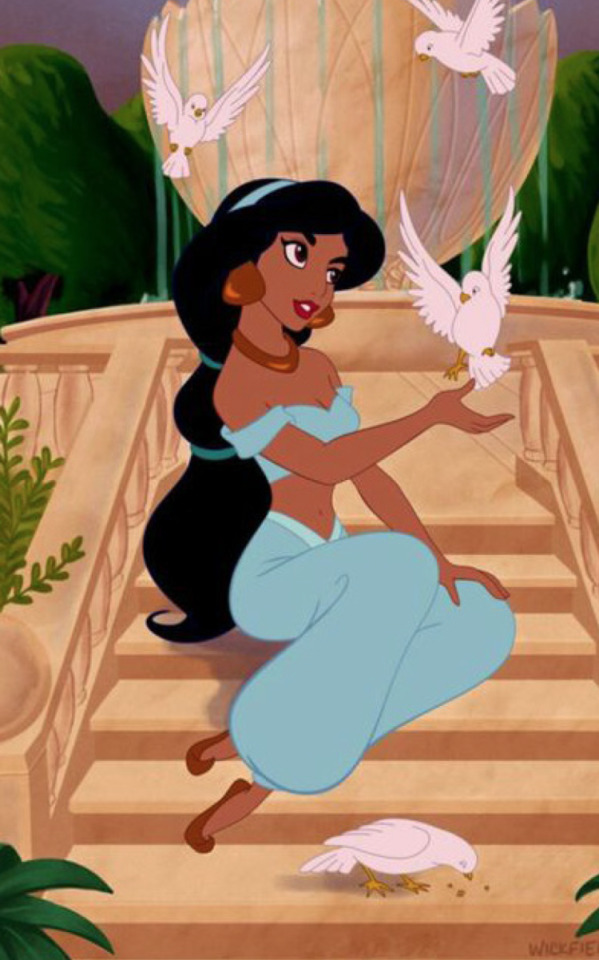
Historically Accurate Jasmine
Jasmine is the sixth for my series of historically accurate Disney princesses. She is one of my personal favorites and i wanted to do her justice. Below the cut is some info on the research and redesign!
I had a very different approach particularly to Jasmine. I love the film and I love Jasmine, she is one of my favorite Disney princesses, but she is not treated very well, nor is Middle East as a whole. To be honest, the whole movie is extremely oriental. The movie was supposed to take place in Baghdad originally, but then the First Gulf War happened during the production and they tried to distance the movie from the Iraqi/Persian origins by changing the setting to fictional city of Agrabah and making the aesthetics more vaguely Asian, meaning they added bunch of Indian visual elements. There’s no way to know how Indian the designs were before the change, but the result is that the movie looks pretty Indian in costuming and setting. However the story still has a lot of nods to Persian and Arabian cultures, for example they mention Allah couple of times, implying they are Muslims (there are of course huge Muslim population in India, but they are generally not in charge, like Jasmine and her dad). It wouldn’t have been inherently bad choice to set a One Thousand And One Hundred Nights story in India since there are Indian and also Chinese versions of the stories, but the movie doesn’t seem to even know there is difference. It’s like throwing together Italian and Turkish elements elements and saying “they are both Mediterranean so it’s basically the same”.
One of the aspects of Orientalism is lumping together the whole Asia and then showing it through Western lens, which clearly happened with Aladdin. Other aspect of it is sexualization. And it has definitely happened with Jasmine. Disney has a very bad record of sexualizing dark skinned girls, but never sexualizing the white characters (even in case of Megara I’d say it’s more she being sexual than the film sexualizing her). Her costume is basically Indian belly dancer outfit, which is certainly not something a princess would wear. Like don’t get me wrong belly dancing is beautiful art and the dancers have amazing costumes, but it’s a deliberate choice when you dress your Disney princess in that outfit instead of a royal dress.
Because the movie is such a mess, I decided I wouldn’t try to make historical version of what the movie was trying to do, but rather I’d try to track down an original version (we’ve established that there are multiple version of this story too). Apparently Aladdin’s story was added to One Thousand And One Hundred Nights by a French translator in 1709. He got the story from a Syrian-born Maronite storyteller, Hanna Diyab, who might have come up with the story himself. Most of Syria (at least Aleppo where he was born) was at the time part of Safavid dynasty Persia, so I decided to set my version of Jasmine in 17th century Persia.

In Persia at the time women wore veils. For wealthy women they seemed to be very long, but didn’t necessarily cover the hair. Status was shown by multiple layers of very fine clothing with rich embroidery. Jasmine being a princess of course needed as many layers as I could show. Unibrows were seen as very beautiful so I gave her that detail too. Another detail is that the flower embroidery on her almost white under dress is supposed to look like jasmines.
#art#disney#alladin#fanart#disney fanart#alladin fanart#jasmine#disney princess#historical clothing#historical fashion#fashion history#dress history#persia#persian clothing#persian history#my art#digital art#historicallt accurate#historically accurate disney princesses
414 notes
·
View notes
Photo

Castle in the Air, by Diana Wynne Jones At least this cover doesn't make me want to devote another 500 words to critiquing it.
#Aladdin#Antoine Galland#Antun Yusuf Hanna Diyab#Castle in the Air#Diana Wynne Jones#fairy tale#fantasy#female agency#female characters#feminism#Howl&039;s Moving Castle#magic#Middle Grade#orientalism#romance#YA
0 notes
Text
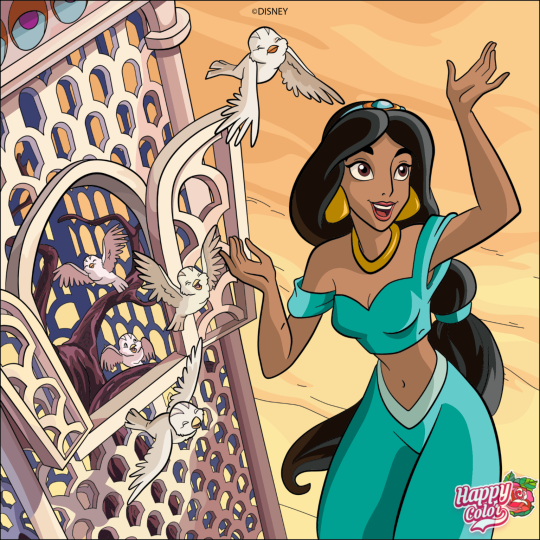
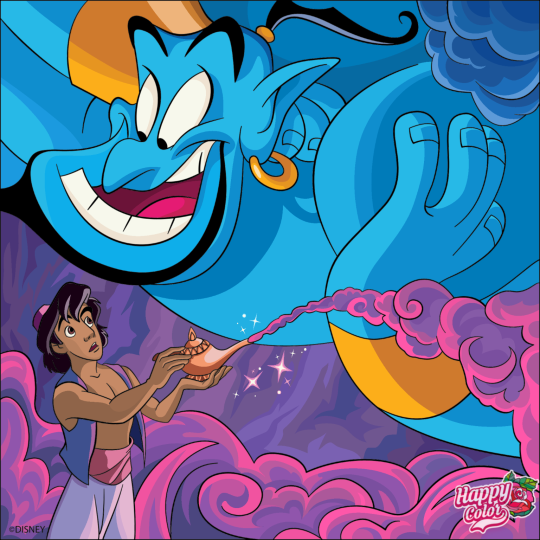
Jasmine, Aladdin & Genie
Aladdin is a Middle-Eastern folk tale. It's one of the best-known tales associated with The Book of One Thousand and One Nights, despite not being part of the original text. It was added by the Frenchman Antoine Galland, based upon a folk tale he heard from the Syrian storyteller Hanna Diyab. Galland's diary reports that his transcription of "Aladdin" for publication occurred in the winter of 1709-10.
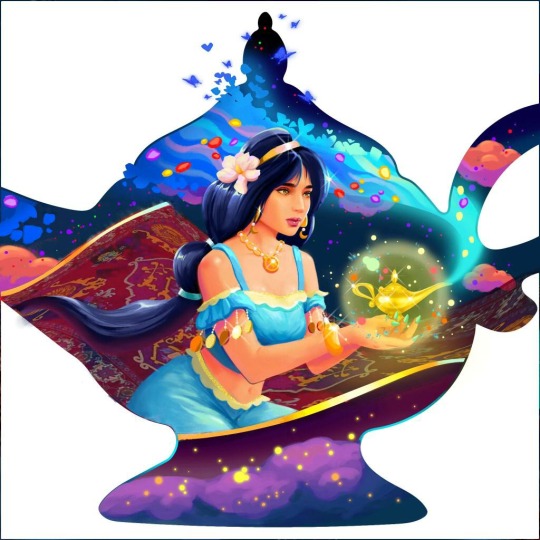
In the United Kingdom, the story of Aladdin was dramatised in 1788 by John O'Keefe for the Theatre Royal, Covent Garden.
Broadway Junior released Aladdin Jr., a children's musical based on the Disney animation.
The Disney's Aladdin: A Musical Spectacular musical stage show ran in Disney California Adventure from January 2003 to January 10, 2016.
StarKid Productions released the musical "Twisted" in 2013, which was a parody if the 1992 Disney film.
A Disney Theatrical Production of Aladdin opened in 2011 in Seattle, in Toronto in 2013, and on Broadway at the New Amsterdam Theatre on March 20, 2014.
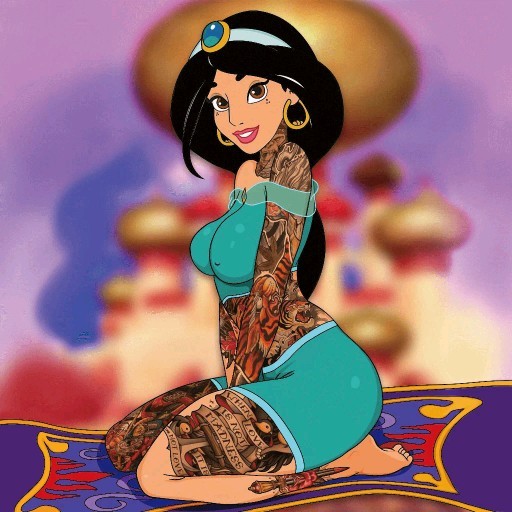
Aladdin is a 48-minute animated film produced by Golden Films and the American Film Investment Corporation. It was released directly to video on April 27, 1992 (months before Disney's version) by GoodTimes Home Video. It was reissued on DVD in 2002.
Aladdin, the 1992 animated feature by Walt Disney Feature Animation, had several characters renamed or amalgamated. For instance, the Princess was renamed Jasmine. The setting was moved from China to the fictional Arabian city Agrabah. It has two sequels released in 1994 and 1996.
Aladdin, a Disney live-action remake of the 1992 animated film was released in 2019.
🎶🎵🎶🎵🎶🎵🎶🎵🎶
A whole new world
A new fantastic point of view
No one to tell us, "No"
Or where to go
Or say we're only dreaming
A whole new world
A dazzling place I never knew
But when I'm way up here
It's crystal clear
That now I'm in a whole new world with you
- "A Whole New World" by Zayn Malik & Zhavia Ward for the 2019 live-action film
4 notes
·
View notes
Text
Why is Aladdin’s Genie Inside a Lamp?
This week on Writing in Margins, I’m examining the tale of Aladdin - and why, specifically, he finds a magical lamp of all things. I’m also taking a look at Hanna Diyab, the storyteller who originally told the tale, who really deserves a movie made of his life.
Read more
3 notes
·
View notes
Text
Hanna Diyab, author of the version of Aladdin that most of us know today, was a Maronite Christian from Syria. Maronites are an ethnoreligious minority that until very recently claimed non-arab MENA roots. He was already denied proper acknowledgement for his work once, let’s not do that again. I encourage you all to look him up yourselves if you want to know more about him.
#like please in your quest for rep and acknowledgement don’t erase other minorities?#i’m not speaking about anything else but i have very strong feelings about twisting someone’s identity for an argument#as someone who has had han chinese people tell me to my face that viet people are all ethnically chinese anyway#and i realize i have no personal stake in this but i don’t know of anyone in this community with maronite ancestry#and i am loathe to let the homogenization go#im not in any way disputing the dumpsterfire that was the disnery movie#idk i have very complicated feelings about this
20 notes
·
View notes
Text
Top Five Favorite Books
TAGGED BY: @hmmm-what-am-i-doing
The Hunchback of Notre Dame

The other famous novel by Victor Hugo. Written in 1831, Notre-Dame de Paris, known in English as The Hunchback of Notre Dame, is a rich, meandering tale that addresses messy relationships, fate, and the future of architecture in 1482. The English title is a misnomer, since the protagonist of the story is Esmeralda, the original title being a metaphor on the cathedral who serves as the central location of the novel, and Esmeralda herself (though one could argue the cathedral is itself a character). Victor Hugo strongly protested against the English title, as it turns the focus from the cathedral onto the characters.
The hunchback is Quasimodo, the deaf, one-eyed, hunchbacked, monstrously ugly bell-ringer of Notre-Dame Cathedral in Paris. Abandoned outside the church at the age of four, he was taken in out of kindness by the Archdeacon of Josas, Claude Frollo, who raised him in the church and introduced him to the bells. When the hitherto chaste Frollo sees the romani girl Esmeralda dancing in the street one day, he finds himself stricken with lust, and doesn't know how to deal with it. So, sure as Love Makes You Evil, he grabs Quasimodo (for muscle) and tries to kidnap her. The attempt is foiled by Phoebus, Captain of the Archers. It is spectacularly not foiled by lovable slacker-poet Pierre Gringoire, who gets knocked out trying to save the girl.Later that night, however, Esmeralda temporarily marries the poet, to save his life from her friends at the Court of Miracles. That doesn't mean she's going to let her new "husband" touch her, mind you, or that she's going to give up her dreams of marrying Phoebus. Phoebus likes the look of her, himself, and although he's already engaged to his teenage cousin Fleur-de-Lys, he's not opposed to a bit on the side. Esmeralda's small kindness to Quasimodo when he is in the stocks for the kidnapping attempt (Frollo having let him take the fall) makes her an angel in Quasimodo's mind, and he is henceforth devoted to her. This eventually, and painfully, puts him in conflict with Frollo, whose combination of lust and loathing for Esmeralda makes him increasingly unstable. Amidst the drama and tragedy resulting from everybody's fatal obsessions, Hugo includes leisurely chapters on the architecture of Paris and the expected impact of the newly-developed printing press.
Frankenstein
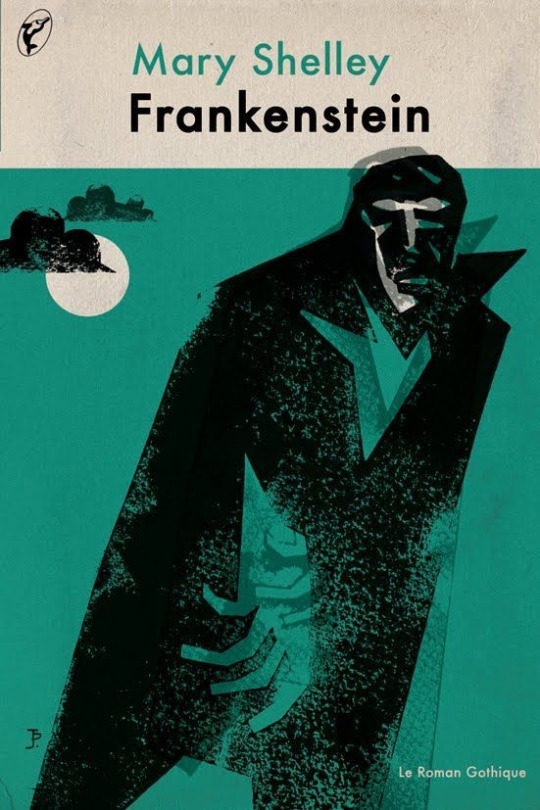
Frankenstein; or, The Modern Prometheus, usually abbreviated to Frankstein is a novel by Mary Shelley. It was originally published in 1818. It had a 1823 reprint without Shelley's involvement and a third edition in 1831, this time with significant edits from the author. Frankenstein is considered an Ur-Example of Science Fiction and inarguably has vast historical significance.
The novel tells of Dr. Victor Frankenstein who unlocks the secrets to Creating Life. He uses this knowledge to create an artificial man, larger and stronger than most mortals, by means which he chooses not to describe. While he is initially triumphant with his success, a few moments of observing the flailing and moaning patchwork being leaves Victor disgusted by and fearful of his creation. Realizing the ramifications of his success, he is horrified. He abandons the Creature and flees to his family's estate. In his absence, the Creature is forced to come to grips with suddenly finding itself alive and alone without explanation or guidance. He learns about humanity by watching a family cottage from afar, but is again driven off when he attempts to offer his friendship- one of many bad run-ins with humanity which leave the monster bitter and cynical. Eventually, the Creature comes to resent his creator, whom he views as his father, for abandoning the Creature to a life of torment, and decides to come home to seek vengeance against Frankenstein...
The subtitle, The Modern Prometheus, compares Victor Frankenstein to the Greek titan Prometheus, who brought the secret of fire from Mount Olympus to mortal men, reflecting on Frankenstein's spiritual would-be theft of the secret to creating life — but like Prometheus, Frankenstein also came to regret his transgression.note Many would say that Frankenstein was the ultimate warning of Science Is Bad, though similar stories were common throughout the industrial revolution and it is not even clear whether the act of creating the Monster was bad in itself, if the world wasn't ready for it, or Frankenstein was just a horrible and abusive parent.
One Hundred Years of Solitude

One Hundred Years of Solitude is a 1967 novel that won Gabriel García Márquez the Nobel Prize for Literature. It's become a staple of Spanish-speaking high school curricula everywhere. Arguably one of the most important pieces of literature written in the 20th century, or to put in context, almost as important as Don Quixote to Spanish speaking literature. Famous, among other things, for using every conceivable trope one could ever hope to fit in 28.8 oz of paper.
The book follows the story of the Buendía family and the town they create, Macondo, from its foundation to its end. Of course, it is told in a non-linear fashion with every generation having the same few names, as well as the same basic attributes (except for a pair of twins whose names are thought to have been accidentally switched at some point). Alongside the story of the Buendía family, there are an abundance of vignettes recounting both the everyday and the supernatural occurrences that shape the lives of the inhabitants of Macondo. The themes range widely, incorporating legendary figures (such as the Wandering Jew), historical events (Sir Francis Drake’s bombing of Rioacha, the Massacre of the Banana growers), and short stories about the love of two minor characters who never get to interfere with the main action. Believe it or not the story takes place in a time span of a hundred years.
Netflix has announced that it will be adapting the story into a television series.
The Arabian Nights

The Arabian Nights, correctly known as The Tales of One Thousand and One Nights (Farsi Hezār-o yek šab, Arabic Kitāb 'alf layla wa-layla), is a massive collection of Fairy Tales drawn from sources as far apart as the Middle East, North Africa, India, and, to an extent, even China and Greece. It has for centuries shaped the European view of the [relative to Europe] "(Near) East" or "Orient", even though only some of the stories are widely known. In fact, early Arabic-language versions only contain about 300 nights. The 701 others were added later; most of the additions were by Arab writers, but European translators added some other folktales they'd collected in their editions. Some of these additions were based on other Arabian sources, but others, including Aladdin and Ali Baba and the Forty Thieves, were stolen by Antoine Galland (the French translator) from Syrian Maronite writer Hanna Diyab, who recounted those tales to Galland and based them on various aspects of his own life. Diyab's autobiography was found in 1993 and greatly expanded our understanding of these stories.
The Framing Device for the story cycle is the tale of King Shahryar and Shahrazad. The King's first wife had cheated on him, so he had her executed. Then, feeling that no woman could be trusted, he hit upon a plan only a powerful and insane tyrant could pull off: He'd marry a woman, spend the night with her, and then, in the morning, send her off to the royal Wazir (chancellor) to be executed. No woman would ever betray him again! After a great many wives were executed in this manner (Richard Burton's translation says the King did this for three years, which would be about 1,100 wives), the Wazir was running out of marriage prospects to present to the King. Then the Wazir's daughter, Shahrazad, came to him with a plan. Since her plan involved marrying the King, the Wazir objected in the strongest manner possible, but nothing would deter the girl, and finally he brought her to the King.
Come the wedding night, once he started putting the moves on her, she feigned becoming upset, and pleaded to see her younger sister one last time. The King acquiesced, and allowed Shahrazad's sister Dunyazad to stay in the room with them until dawn. Even while they consummated the marriage. Awkward. After that and the three of them went to sleep, the sisters woke up at midnight. Just as planned, Dunyazad asked Shahrazad to tell her a story, but by the morning she was not finished, and ended the story on a Cliffhanger. The awoken King was so hooked on the story that he postponed the execution for one night, in order to hear the rest. But after Scheherazade ended that story, it was still the middle of the night, and she started up another story, again ending on a cliffhanger in the morning. The nightly routine continued. Some of the stories were simple, some complex and multi-layered; sometimes a character in one story would begin to tell a second story, and sometimes the story was never actually ended because Scheherazade had gone on two or three layers and never returned to wrap up. Or sometimes she claimed she didn't know the ending, but had another tale that was even more intriguing than the unfinished one. But all of the stories were so compelling that the King could never bear to order her execution without hearing the ending. So Shahrazad kept up the stories for three years — in the meantime bearing Shahryar three sons — and finally, after 1,001 nights, she said that she had told all of her tales and was ready to die. But the King had fallen in love with her, and had been calmed by her entrancing stories. He declared that no woman in the kingdom was as wise as Shahrazad, and he made her his queen for keeps this time, and they lived Happily Ever After.
Unlike many legends which deal primarily with the deeds of the nobility (who after all were the ones who could afford to have a bard as a permanent resident at their palaces), Arabian Nights has the fascinating twist that it covers people from myriads of occupations in a highly-complex society.
The Mysterious Flame of Queen Loana

A novel by Umberto Eco.
Yambo Bodoni has a problem. After suffering a stroke, he lost his episodic memory. Now he can't remember his name, family, or any aspects of his life. Thanks to a lifetime of work as an antiquarian book dealer in Milan, however, he can recall anything he's ever read. In order to rediscover his lost past, Yambo heads to his childhood hometown of Solara. As he pores through old newspapers, comics, and magazines, Yambo - and the reader - get glimpses into the often tragic and bittersweet reality of a boy coming of age in Italy during World War II.
9 notes
·
View notes
Photo

This is my interpretation of Aladdin, the famous protagonist of a Middle Eastern folktale recorded by the Syrian storyteller Hanna Diyab. In the 18th century, the Frenchman Antoine Galland appended Diyab's telling of the story to his own translation of The Book of One Thousand and One Nights (better known as The Arabian Nights); before this, Aladdin's story was not actually part of that volume.
In Diyab's original recollection of the folktale, Aladdin was supposed to be from China. However, all other elements of the story (such as the characters' names and the presence of Islamic djinni) betray the story's Middle Eastern roots, so I chose to portray Aladdin as a typical lower-class individual from medieval Arabia. Besides, that's the interpretation I grew up with.
2 notes
·
View notes
Note
The Aladdin myth is rooted by racism, Orientalism and Islamophobia, but there are whole generations now that are oblivious to the story’s seedy past. It’s just a fun movie from Disney now. Well two fun movies. Is this good? Is it bad? What is to be done about it? I’m so conflicted.
Hmm, okay. There is, as John Mulaney says, a lot to unpack here.
First off, the Aladdin story originally derives from the European editions and translations of the classic Arabian story collection of the Thousand and One Nights. It’s not present in the original Arabic text, but a guy named Hanna Diyab, a seventeenth-century Syrian Maronite from the Ottoman Empire, is believed to have been the original author of the story. His contribution was not acknowledged by the French translator of the Nights, Antoine Galland, because… well, we all know why. (Diyab also wrote his own autobiography, which is now in the Vatican archives.) The transmission history and original format of the tales told by Diyab to Galland is both fascinating and an example of a certain kind of East-West contact taking place in the eighteenth century. So this means that Hanna Diyab, an actual Middle Eastern person, was probably the original fabricator or creator of the Aladdin story, and that while it was influenced by European fairytale conventions, he still told it himself and narrated his life story in his own terms and was a real historical person. He should not be erased even in critiquing the context of Orientalism and colonialism and racism, and Aladdin itself should not necessarily be viewed as a myth imposed on a culture without its consent (beware the idea that indigenous cultures are passive and helpless and only subject to white victimisation and have never genuinely produced anything of their own). It has been performed and adapted for hundreds of years, and yes, some of those have obviously been outrageously racist and coloured by racist tropes and themes, because: welcome to the world, it sucks. But still. Aladdin existed as a collaborative and cross-cultural and adaptive narrative entity from the start. This is not that different.
The original setting of the story places it “in one of the cities of China,” though all the narrative trappings are solidly Muslim and Middle Eastern and China would also serve as a suitably mythic and far-away place for these audiences. Believe me, I also had a moment of cringe when I heard that Guy Ritchie (a white English guy) was making an Aladdin movie. But with the exception of Will Smith, and the random Billy Magnusson white-guy character they had to include (I have not seen the movie, so I don’t know how that’s treated), the cast was in fact Middle Eastern/of Middle Eastern descent, and the word on the street seems to be that actual Muslim/Arabic people are excited about getting a big-budget fantasy blockbuster that shows a favorite story in a positive light. Representation matters. This is fun and a nice change if you’re used to being cast over and over as the faceless Anti-American Bad Guys ™. So if you need permission to Enjoy The Thing without feeling guilty (which is not helpful) or worrying if it’s Problematic: here you go. Enjoy the thing. It’s okay. The people who are actually part of the culture are doing that. Nobody is making any claims about this being a real or accurate or authentic piece of Middle Eastern history and culture. There is a blue Will Smith in it, for God’s sake. But that doesn’t mean it can’t be enjoyed and fit into the (as noted, very long) tradition of Aladdin interpretations and productions.`
I applaud your initiative in considering the intersectionality of it, and trying to educate yourself. But Aladdin is a lot more than a fun Disney movie, and does not exist solely as a racist myth with a “seedy past” imposed on a non-white culture without its consent. (Once again, the idea that only white people have agency, whether good or bad, and that all non-white cultures are passive and helpless victims is just as racist.) Hanna Diyab was a real Middle Eastern person, the movie has real Middle Eastern people in it, and real Middle Eastern/Arabic people are excited about it, as are Disney fans. From what I’ve seen on my dash, it seems to be better than expected, if not an overall smash hit, and a generally fun time with decent character interpretations (and everyone is thirsty for Hot Jafar). Tumblr likes to point at things and yell social justice buzzwords, and again, I don’t think there’s anything wrong with trying to consider these themes. As for what should be done about it, man, I wish I knew. Your guess is good as mine. But hopefully this is some food for thought.
154 notes
·
View notes